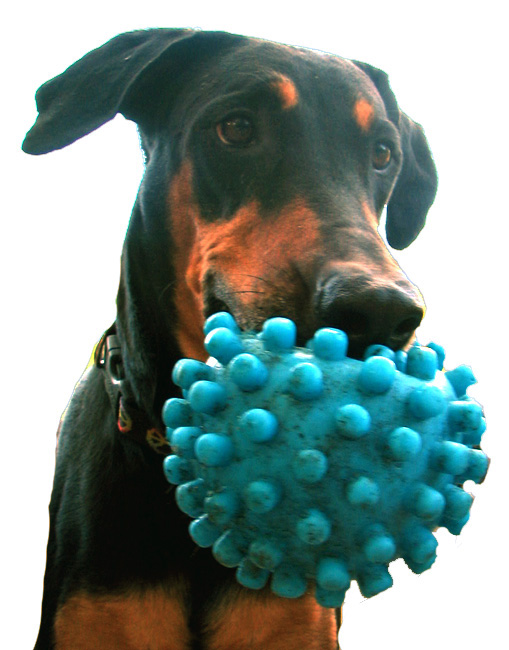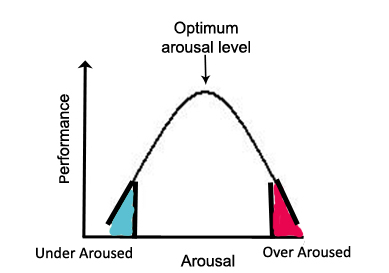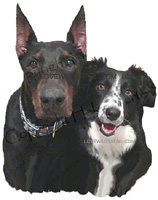Some dogs are highly motivated by toys. They’re born to play, and when you are blessed with a dog like this, you’ll have plenty of dog training time because the reward of play is always available. The flip side, however, is you have to give these dogs a lot to do, and do a lot with them, or they’ll be called destructive and uncontrollable when they use their energy for whatever makes them happy. Case in point why I offer a breed selection service to clients. Finding the right dog to fit your lifestyle takes some research and planning.
 Dogs with high toy drive are a big responsibility, and anyone considering adopting one, such as a Malinois or Border Collie, should be prepared to invest time in their development and maintenance. More time than other breeds. You’ll also find the occasional drivey dog in breeds that aren’t well known for the intense, limitless play drive.
Dogs with high toy drive are a big responsibility, and anyone considering adopting one, such as a Malinois or Border Collie, should be prepared to invest time in their development and maintenance. More time than other breeds. You’ll also find the occasional drivey dog in breeds that aren’t well known for the intense, limitless play drive.
Take for example, my Dobie, Raven. She has an extremely high play drive for a Dobermann, and is ready to train for the reward of play at the drop of a hat. She does, however, go over the top with toys, and can lose her impulse control and focus because she’s gone out of that optimal learning zone.
 I gleaned the concept behind the arousal curve for training dogs from Susan Garrett. This is a bell curve appropriate for dog learning. When a dog is under aroused, the motivation from the dog trainer is likely to blame. If the motivation is not reinforcing to the dog, then he’ll be highly distracted. There will be very little focus, if any, on dog training because the payola is not worth the effort, so the dog looks for other activities to do.
I gleaned the concept behind the arousal curve for training dogs from Susan Garrett. This is a bell curve appropriate for dog learning. When a dog is under aroused, the motivation from the dog trainer is likely to blame. If the motivation is not reinforcing to the dog, then he’ll be highly distracted. There will be very little focus, if any, on dog training because the payola is not worth the effort, so the dog looks for other activities to do.
If the dog is not engaged with the trainer, but knows how and, more importantly, likes to play, using play in between training tasks to get and keep the dog optimally aroused, can help, with the addition of the right kind of payola as a reward for dog’s good responses to suitable criteria. Arousing disinterested dogs through play can be hard work, but good dog trainers can tune into what makes a dog tick, use techniques to hone the motivation, which results in efficient and effective training sessions. Optimal arousal happens through motivation. And motivation happens by using rewards the dog finds reinforcing.
The other end of this bell curve is were drivey dogs often times go. They are so excited they can’t focus on the training task at hand, and instead, can only think of “toy toy toy toy.” (Or “squirrel, squirrel, squirrel, squirrel,” etc.) Over aroused dogs need help with their intensity in order to re-engage with training.
Both sides of the bell curve have their challenges, and of course, dogs that trend towards the middle of the curve are the dream doggies for training. With finessing, though, good professional reward-based dog trainers can draw dogs from either end of the curve back into the middle. Wielding motivation is what we do and why we’re paid.
Now here’s a snippet of my drivey Dobie, Raven, doing twelve weave poles for a chance at fetch. Once again, I have to mention Susan Garret for the method I use to train weave poles. The 2 x 2 method. It’s a brilliant way to train dogs to do weave poles, and for drivey dogs, it’s the only method I’d use.
